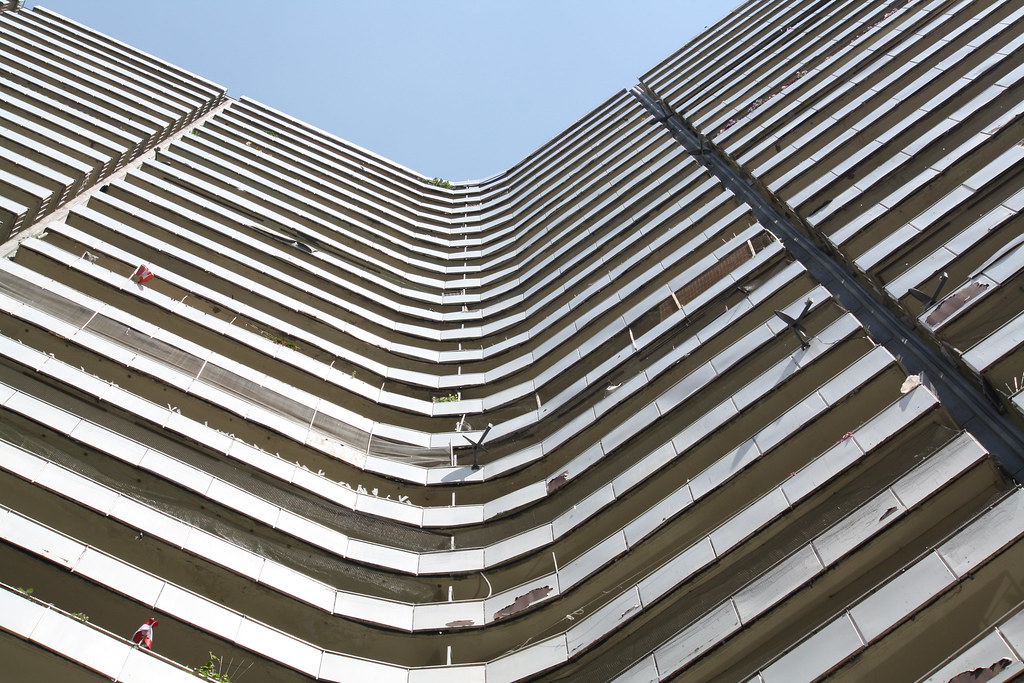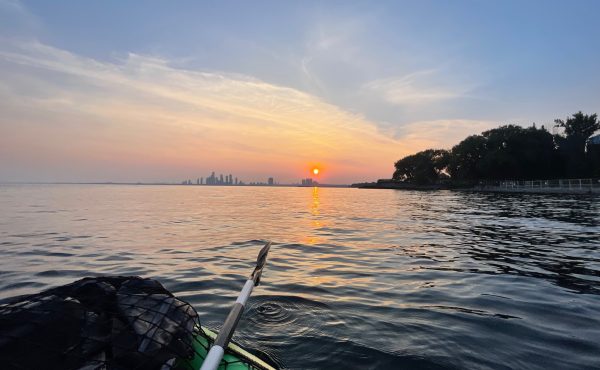
The following is a reprint of my recent Psychogeography column in Eye Weekly on the NFB’s Highrise project. This spring, the participants of The Thousandth Tower photo workshop will present this work at two major downtown events. TOMORROW, May 12 at 6pm the web documentary will launch in the first floor rotunda of City Hall. All are welcome. Next week, on May 26 at 6pm images from The Thousandth Tower will be presented at our annual Toronto the Good party, along with talks from Margaret and Phil Goodfellow, authors of A Guidebook to Contemporary Architecture in Toronto (and I will talk about my new book Stroll: Psychogeographic tours of Toronto).
![]()
Toronto is a vertical city but we don’t see ourselves that way. Our collective imagination tends to see us as the “city of neighbourhoods” which means, inevitably, houses on a grid of streets anchored by low-rise retail strips. This civic mythology was set in place by the epic struggles of the 1960s and 1970s, when a new breed of city council reformers and citizen activists stopped expressways and preserved historic neighbourhoods. Largely safe from major development forces, those neighbourhoods are celebrated today and will continue to be beloved.
Yet in between many of these well-known neighbourhoods are clusters of towers — vertical neighbourhoods — that tend not to factor into our image of Toronto. Think of the Yonge Street clusters at St. Clair, Davisville and Eglinton. Along the Danforth there are clusters at Main Street and Victoria Park (Crescent Town). To the west along Bloor, there’s one at Dovercourt and another really big one across from High Park. All the way out to the 905 border, Toronto’s inner suburbs are spotted with towers. Looking at the city when arriving by plane it appears to be a lawn with dandelions sprouting all over it. In fact, between the 1950s and 1980s, over 1,000 towers were built around Toronto, and dozens more have gone up in the contemporary wave of building that has occurred since the end of the early-’90s recession. Toronto is second only to New York for the highest number of buildings over 12 storeys in North America.
So who lives in these buildings? Many of the buildings downtown (save for places like St. James Town) have maintained the middle-class demographic for whom they were intended, albeit with a little less of the Swinging-’60s vibe with which many were first advertised (though Yonge and Eglinton might capture it best with the many “Young and Eligible” types running around there). Lots of people live uptown, Woody Allen– and George Jefferson–style lives in these towers.
The towers in Toronto’s peripheral areas, however, tend to have different economic demographics; they often aren’t as well-maintained and are a prime destination for newcomers when they first arrive in Canada. The Canada that they very quickly come to know has little to do with the image of Canada we were given via Canadian literature, and certainly isn’t the mythic Toronto of Victorian and Edwardian neighbourhoods.
Though the towers have not been a big part of Toronto’s narrative, some of the stories of their storeys are now being told through an innovative web documentary project by the National Film Board called The Thousandth Tower. Filmmaker Katerina Cizek was recently the NFB’s “Filmmaker in Residence” at St. Michael’s Hospital, and that introduction to urban issues led her to start researching Toronto and other cities for her next project — one that would expand the doc model they developed out into the city.
“I had about a year to research,” says Cizek. “Throughout that time I started getting to know people working on urban issues. That’s how I learned about Tower Renewal. It’s a huge way of rethinking the city I live in.”
Tower Renewal is the City’s plan to retrofit some of Toronto’s aging modernist concrete towers to both make them greener and address some of the social issues that came about with the tower-in-the-park style development. Through the project, the underused and poorly maintained surrounding lawns will become useful (there are even urban-agriculture possibilities) and people places reimagined by infill development and better-kept public spaces. The Thousandth Tower explores one of the Tower Renewal pilot sites on Kipling Avenue in Rexdale and is the first project that has come out of the NFB’s “Highrise” umbrella, a multi-year, multimedia documentary that looks at buildings not just in Toronto, but around the world.
Cizek and her colleagues Heather Frise and Maria Saroja Ponnambalam started by meeting with the local Action for Neighbourhood Change group that connected her with individual residents. “We spent a lot of time in the building getting people to go to focus groups and ended up with a group of six residents,” says Cizek. “We have an adult group with a range in age and perspective and how long they’ve been in the tower.”
The residents were given digital cameras to document their lives in the tower. “Some of the photos are of the beautiful views out of their windows; trips going home from the store; from around the property; and in the [adjacent] ravine,” says Cizek. “Looking at the exhibit now, you can see commonalities. People are happy to be in Canada and are in the process of becoming Canadian citizens but always thinking of home and having feelings of loneliness and alienation. They carry all those memories into the place that they occupy today.”
When viewing the exhibit, the towers start to look not like hunks of concrete, glass and steel but rather giant filing cabinets of human life and memory. It also mixes Toronto with “back home” in beautiful ways. Of a photo she took of the ravine, one participant, Privanti, wrote: “Going to the ravine behind our building really reminds me of Kashmir, the Heaven of India. There is a wooden bridge on the Humber River which connects this pathway to the park. It’s like the bridge between us and the Supreme Soul. When I feel lonely or depressed, going to the park gives me a lot of energy. It helps me to get away from the materialistic world and takes me into that spiritual place — divinity, you can say.”
A less romantic take on the same area by another resident, Irene, points out how these buildings aren’t maintained the same way those middle-class buildings are: “Back home there’s a lot of scenery, a lot of green. You step outside and you step into green. You have flowers, you can plant as much as you want. You just journey and walk through your land. You can sit under an orange tree, you can climb on a plum tree, pick fruits, eat, just enjoy it. I don’t have that here, I’m in an apartment, just looking around. There’s nothing that makes you want to walk, and take a stroll, and when you look at the swimming pool, it’s cemented over.”
When these stories are told, Toronto’s “faceless” towers are filled with personality and a program like Tower Renewal seems even more urgent.
Photo by Danielle Scott.




One comment
This project is fascinating because of the sheer number of these towers and how so many Torontonians live in these buildings. Yet the seem to often be forgotten when we think of our urban landscape.
The architecture isn’t all generic. There are some powerful designs as well the unusual, like Uni Prii’s Jane Exbury towers. We need more films and books about these high-rise communities in our relatively dense suburbs.